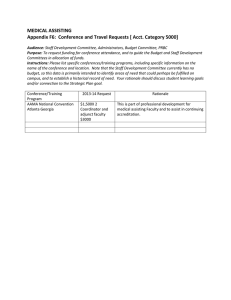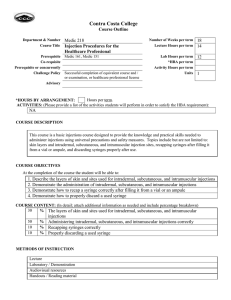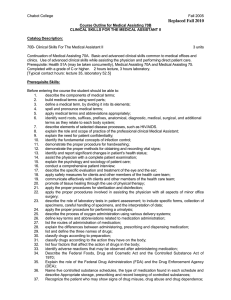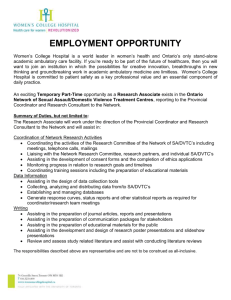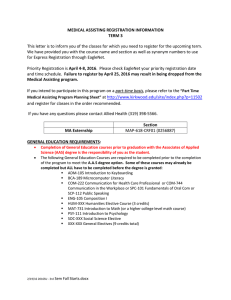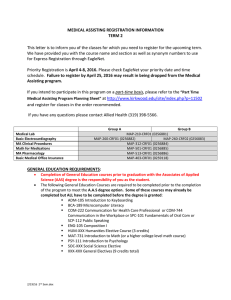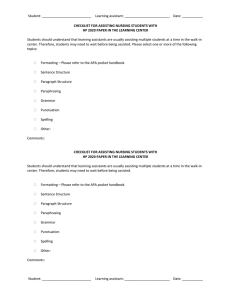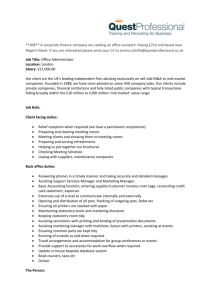C Course Outline for Medical Assisting 500 Removed Fall 2006
advertisement
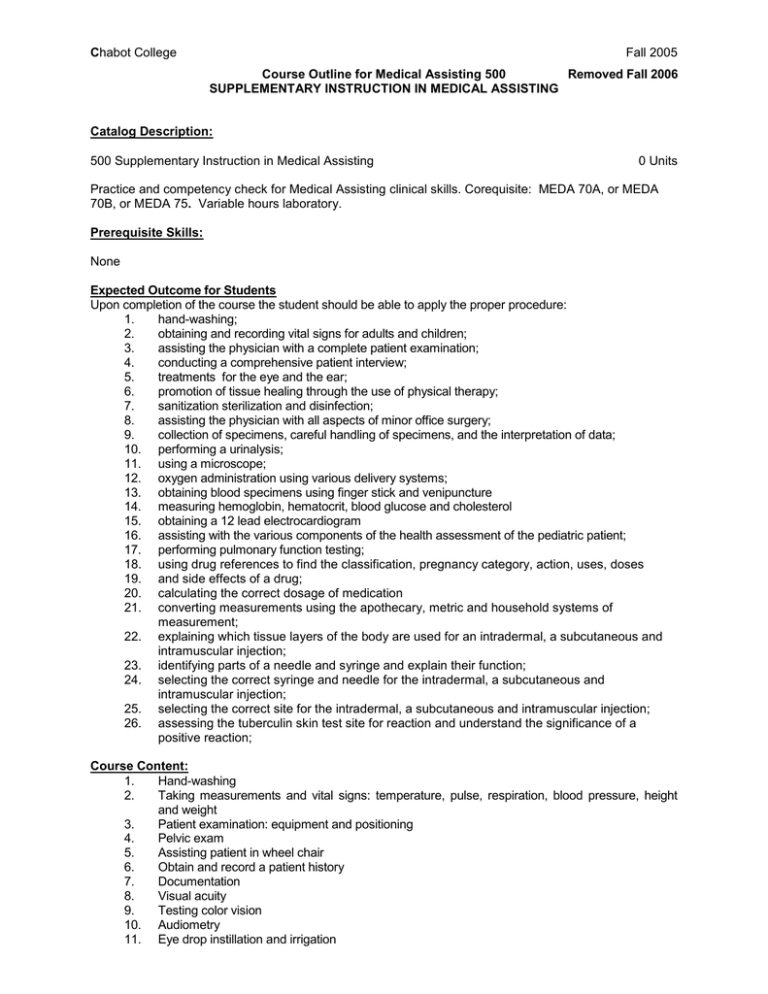
Chabot College Fall 2005 Course Outline for Medical Assisting 500 Removed Fall 2006 SUPPLEMENTARY INSTRUCTION IN MEDICAL ASSISTING Catalog Description: 500 Supplementary Instruction in Medical Assisting 0 Units Practice and competency check for Medical Assisting clinical skills. Corequisite: MEDA 70A, or MEDA 70B, or MEDA 75. Variable hours laboratory. Prerequisite Skills: None Expected Outcome for Students Upon completion of the course the student should be able to apply the proper procedure: 1. hand-washing; 2. obtaining and recording vital signs for adults and children; 3. assisting the physician with a complete patient examination; 4. conducting a comprehensive patient interview; 5. treatments for the eye and the ear; 6. promotion of tissue healing through the use of physical therapy; 7. sanitization sterilization and disinfection; 8. assisting the physician with all aspects of minor office surgery; 9. collection of specimens, careful handling of specimens, and the interpretation of data; 10. performing a urinalysis; 11. using a microscope; 12. oxygen administration using various delivery systems; 13. obtaining blood specimens using finger stick and venipuncture 14. measuring hemoglobin, hematocrit, blood glucose and cholesterol 15. obtaining a 12 lead electrocardiogram 16. assisting with the various components of the health assessment of the pediatric patient; 17. performing pulmonary function testing; 18. using drug references to find the classification, pregnancy category, action, uses, doses 19. and side effects of a drug; 20. calculating the correct dosage of medication 21. converting measurements using the apothecary, metric and household systems of measurement; 22. explaining which tissue layers of the body are used for an intradermal, a subcutaneous and intramuscular injection; 23. identifying parts of a needle and syringe and explain their function; 24. selecting the correct syringe and needle for the intradermal, a subcutaneous and intramuscular injection; 25. selecting the correct site for the intradermal, a subcutaneous and intramuscular injection; 26. assessing the tuberculin skin test site for reaction and understand the significance of a positive reaction; Course Content: 1. Hand-washing 2. Taking measurements and vital signs: temperature, pulse, respiration, blood pressure, height and weight 3. Patient examination: equipment and positioning 4. Pelvic exam 5. Assisting patient in wheel chair 6. Obtain and record a patient history 7. Documentation 8. Visual acuity 9. Testing color vision 10. Audiometry 11. Eye drop instillation and irrigation Chabot College Medical Assisting 500, Page 2 Fall 2005 12. 13. 14. 15. 16. 17. 18. 19. 20. 21. 22. 23. 24. 25. 26. 27. 28. 29. 30. 31. 32. 33. 34. Ear drop instillation and irrigation Physical therapy; ambulatory assistive devices, application of heat, application of cold Sanitization sterilization and disinfection Operating the autoclave Minor office surgery; sterile glove, setting up and maintaining a sterile field, bandage application, removal of sutures and staples Urinalysis Using microscope Oxygen administration using nasal cannula and face mask Obtaining blood specimens using finger stick and venipuncture Hemoglobin, Hematocrit Blood glucose Cholesterol 12 lead electrocardiogram Spirometry Metered dose inhaler Calculating the correct dosage of medication Apothecary, metric and household systems of measurement; Parts of a needle and syringe Equipment for the intradermal, subcutaneous and intramuscular injection Correct site for the intradermal, a subcutaneous and intramuscular injection Administering the intradermal, a subcutaneous and intramuscular injection Tuberculosis skin test Methods of Presentation: 1. 2. 3. One-on-one skills teaching and competency check Group teaching of skills Individual instruction Assignments and Methods of Evaluating Student Progress: 1. 2. Typical Assignments a. Complete practice and performance of clinical skills Methods of Evaluating Student Progress a. Show improved performance as demonstrated in MEDA 70A, MEDA 70B, and MEDA 75 including performance on final exam Textbook: Fundamentals of Medical Assisting Text, Sue A Hunt, Saunders, 2002 Fundamentals of Medical Assisting Student Mastery Manual, Sue A. Hunt, Saunders, 2002 Special Student Material: Medical Assisting Student Handbook dress requirements KC – [U:\kc’document\course outline\MEDA500.doc] New: September 2004
